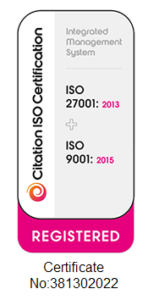The Power of Virtual to Bring Knowledge to Diverse Audiences
As a consequence of the easy access to virtual events, they have the potential to ease social inequalities, since easier access allows disadvantaged individuals to participate in the scientific discourse, independent of gender, race, geography or social status. – Effective Learning in Virtual Conferences: The Application of Five Principles of Learning
Findings suggest that virtual learning may be more effective than in person when it comes to science symposia.
From our experience in moderating virtual learning meetings, conferences and symposia this is abundantly clear when engaging non-native English speakers both in the moment and post-event.
Never assume that just because audience members come to an English-language symposium they have a consistent level of English. We have found that giving people the opportunity to see transcripts or translations in the moment is the most effective way of helping audience members to understand, engage and question.
We’ve run symposia in English and Japanese where at least six out of 40 attendees spoke no English at all. By using a Zoom platform, we were able to have real-time translation for those attendees. We’ve done events in Africa where we might have sub-titles in French or Portuguese, depending on the country in question, and we have used other technology which allows people to choose the language they want for text-based translation in real time. We have also made post-event, on-demand sessions available in five separate languages.
The purpose of providing audiences with language choice is to improve both understanding and accessibility. Of course, it does require you get that translation right, and that takes time, effort and additional budget, none of which should be underestimated. However, if you’re genuinely interested in engaging the audience, you have to go that extra mile.
Even for English-speaking attendees there are many reasons why virtual can be a more effective learning environment for a larger number of people. These include:
• Increased accessibility, which in turn means more attendees and better community and relationship building
• The removal of the stress and costs of travelling to a venue – both locally and globally
• The opportunity to offer sessions on-demand after the live recording, meaning it’s easier to fit into a busy schedule attracting a wider demographic e.g. full time employees and parents
• The option to re-watch on-demand video allows students to focus on the session rather than on hurriedly taking notes
• The potential to make use of online tools such as gamification tools and flashcards
• The option for teachers to share links and documents without having to print out documents
• The ability to get immediate feedback on tests
• Allowing more reserved students to take part in online discussions.
Adjusting to a new environment
While virtual learning has proven to be very effective, it does require some changes to the way sessions are conducted.
A large element of this is leveraging the right technology and skill set, but there is also a need for the faculty to adjust their presentations to the virtual world. The best presenters recognise that audience attention span is likely to be reduced in virtual, that people are more likely to be distracted and that language is likely to be an issue with attendees from multiple countries, and they adapt the presentation to make it more user friendly for a virtual environment. That means they have to do more polling, add more questions for the audience and have more of a discussion format.
One method we have found to be effective is to have a moderator facilitating a discussion, which removes the stress on presenters by shifting the technology aspects to a third-party. That moderator can triage the questions from the audience to the speaker, allowing the speaker to focus on the content. This approach actually emulates the physical world more, where typically you would have someone managing the interaction between the speaker and the audience.
Be prepared
Good virtual sessions are those that identify, in advance, audience members who might want to get involved and then have someone work the virtual room in the same way they would in a physical conference. It’s really about adapting effective approaches from the physical world to the virtual. That might be in terms of the format, in terms of how sessions are chaired or moderated, there might be effective ways to ask questions or opportunities to gather feedback in advance, such as through a poll. There just needs to be a bit more thought given to how these activities are managed in the virtual world.
We have observed sessions where the speaker has struggled to share their slides or where they have talked without a break for an hour or more, prompting attendees to leave. It doesn’t matter how brilliant your presentation is or how knowledgeable you are, in virtual you have to engage, you have to get the technical aspects right and you have to ensure your audience understands you. Audiences can and do learn more in virtual – when it’s done right – but you need to make sure your session is engaging from the start, that it’s accessible to all attendees and that you’re making best use of technology.
Leslie Robertson is the Founder of Open Audience, an audience engagement consultancy that specialises in making life sciences meetings more engaging with more positive, successful outcomes – whether in-person or in the virtual space. The Open Audience team helps to strategise and prepare pre- and post-meeting as well as providing real-time support and guidance during the meeting. Open Audience also offers customisable, multilingual engagement platforms that include interactive polling, surveys, and ideas exchange.

